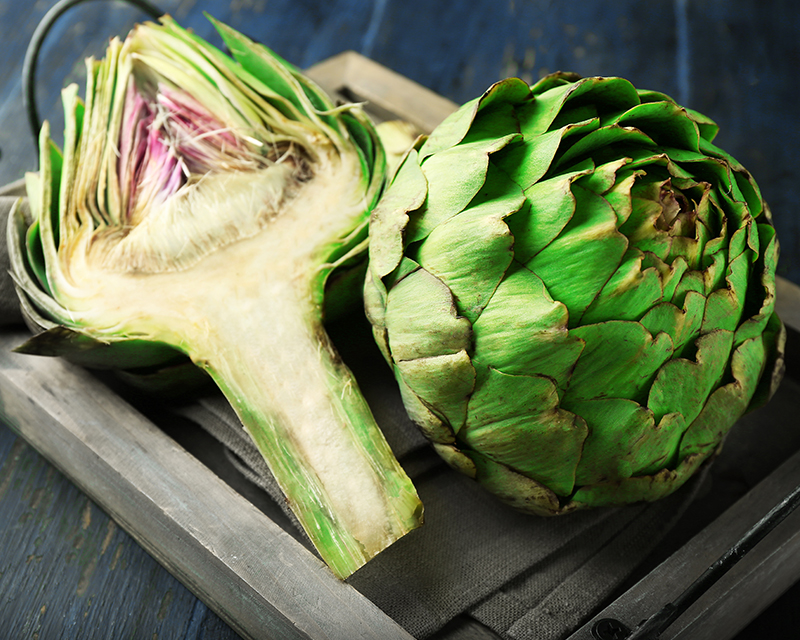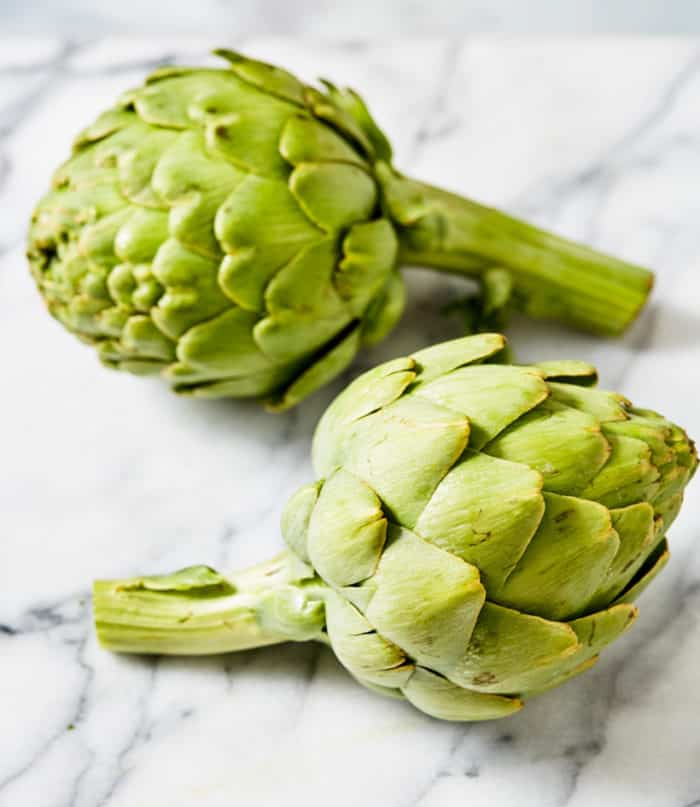What Makes Artichokes a Seasonal Delicacy
As the seasons change, so do the flavors and textures of our favorite ingredients. Artichokes, in particular, are a prime example of a seasonal delicacy that’s worth savoring. But what makes artichokes so special, and why do they vary in flavor and texture depending on the time of year?
The answer lies in the artichoke’s unique growth cycle. Artichokes are typically harvested between March and May, with the peak season usually occurring in April. During this time, artichokes are at their sweetest and most tender, making them a prized ingredient in many springtime recipes. However, as the season progresses, artichokes can become tougher and more bitter, losing some of their delicate flavor.
Understanding when artichokes are in season is crucial for cooks and foodies who want to make the most of this versatile ingredient. By knowing when to expect fresh picks, you can plan your meals around their peak flavor and texture, ensuring that your dishes are always bursting with freshness and flavor.
How to Choose the Perfect Artichoke
When it comes to selecting the freshest and best-tasting artichokes, there are a few key things to look for. First, consider the color: artichokes should have a vibrant green color, with no signs of browning or wilting. Next, examine the shape: artichokes should be tightly closed, with no gaps between the leaves. Finally, check the size: artichokes can vary in size, but generally, the larger ones are more mature and have a more developed flavor.
In addition to these visual cues, there are a few other factors to consider when choosing the perfect artichoke. For example, artichokes that are heavy for their size tend to be more dense and flavorful. You should also gently squeeze the artichoke to check for freshness: a fresh artichoke will have a slight give, while a stale one will be hard and unyielding.
By following these tips, you can ensure that you’re getting the freshest and best-tasting artichokes available. And when you combine these selection tips with an understanding of when artichokes are in season, you’ll be well on your way to unlocking the full flavor and potential of this delicious ingredient.
The Artichoke Harvest Cycle: When to Expect Fresh Picks
The artichoke harvest cycle is a crucial factor in determining when artichokes are at their peak flavor and freshness. In general, artichokes are typically in season from March to May, with the peak season usually occurring in April. During this time, artichokes are harvested when they are mature and fully formed, but still tender and sweet.
The harvest cycle affects not only the availability of artichokes but also their flavor and texture. Artichokes that are harvested too early may be immature and lack flavor, while those harvested too late may be tough and fibrous. By understanding the harvest cycle, you can plan your meals around the freshest and best-tasting artichokes.
For example, if you’re looking for baby artichokes, which are harvested before they reach full maturity, you can expect to find them in season from February to April. If you prefer larger, more mature artichokes, you can expect to find them in season from April to June. By knowing when to expect fresh picks, you can make the most of this seasonal delicacy.
When are globe artichokes in season? The answer depends on your location and the specific variety of artichoke. In general, globe artichokes are in season from March to May, with the peak season usually occurring in April. However, some varieties may be available earlier or later in the season. By understanding the artichoke harvest cycle, you can enjoy the freshest and best-tasting artichokes all season long.
Regional Variations: When Artichokes are in Season Across the US
While artichokes are typically in season from March to May, the exact timing of the season can vary depending on the region. In the US, California is the largest producer of artichokes, accounting for nearly 100% of the country’s artichoke crop. In California, the artichoke season typically begins in February and lasts through May, with the peak season usually occurring in April.
In Arizona, another major artichoke-producing state, the season typically begins in March and lasts through June. In other parts of the country, such as Oregon and Washington, the season may be shorter, typically lasting from April to June. By understanding the regional variations in the artichoke season, you can plan your meals around the freshest and best-tasting artichokes.
For example, if you’re looking for artichokes in the Northeast, you may need to wait until May or June, when they are more readily available. In contrast, if you’re on the West Coast, you may be able to find fresh artichokes as early as February. By knowing when artichokes are in season in your region, you can enjoy the freshest and best-tasting artichokes all season long.
When are globe artichokes in season in your region? The answer depends on your location and the specific variety of artichoke. By understanding the regional variations in the artichoke season, you can make the most of this seasonal delicacy and enjoy the freshest and best-tasting artichokes all year round.
How to Store and Prepare Fresh Artichokes
Once you’ve selected the freshest and best-tasting artichokes, it’s essential to store and prepare them properly to preserve their flavor and texture. Here are some tips to help you get the most out of your artichokes:
Storing Fresh Artichokes: To keep artichokes fresh, store them in a cool, dry place, such as the refrigerator. Wrap the artichokes in a damp paper towel or plastic bag to maintain humidity. Artichokes can be stored for up to 5 days, but it’s best to use them within 2-3 days for optimal flavor and texture.
Trimming and Preparing Artichokes: Before cooking, trim the artichokes by removing the tough, fibrous outer leaves and cutting off the stem. Use a vegetable peeler to remove any tough skin from the stem and base of the artichoke. Then, cut off the top inch of the artichoke, and use a spoon or melon baller to scoop out the fuzzy choke from the center.
Cooking Artichokes: Artichokes can be cooked in a variety of ways, including boiling, steaming, grilling, and roasting. To boil or steam artichokes, place them in a large pot or steamer basket, and cook for 20-30 minutes, or until the outer leaves can be easily removed. To grill or roast artichokes, brush them with olive oil and season with salt, pepper, and any other desired herbs or spices.
Preserving Artichokes: If you want to enjoy artichokes year-round, consider preserving them through freezing or canning. To freeze artichokes, blanch them in boiling water for 3-5 minutes, then shock them in an ice bath. Pack the artichokes in airtight containers or freezer bags, and store them in the freezer for up to 8 months. To can artichokes, follow a tested canning recipe and procedure to ensure food safety.
By following these tips, you can enjoy the freshest and best-tasting artichokes all season long. Whether you’re a seasoned artichoke enthusiast or just discovering the joys of this seasonal delicacy, learning how to store and prepare fresh artichokes is essential to making the most of this flavorful and versatile ingredient.
Seasonal Artichoke Recipes to Savor
One of the best ways to enjoy fresh artichokes is to try new and exciting recipes that showcase their unique flavor and texture. Here are some seasonal artichoke recipes to savor:
Grilled Artichokes with Lemon-Herb Butter: This simple yet flavorful recipe is perfect for spring and summer gatherings. Simply brush artichokes with olive oil, season with salt and pepper, and grill until tender. Serve with a compound butter made from lemon zest, parsley, and garlic.
Roasted Artichoke and Asparagus Salad: This hearty salad is a great way to enjoy artichokes in the spring. Roast artichokes and asparagus in the oven until tender, then toss with mixed greens, cherry tomatoes, and a tangy vinaigrette.
Sautéed Artichoke and Spinach Risotto: This creamy risotto is a delicious way to enjoy artichokes in the spring. Sauté artichoke hearts and spinach in olive oil, then add Arborio rice and cook until tender. Finish with grated Parmesan cheese and a drizzle of truffle oil.
Artichoke and Feta Stuffed Chicken Breasts: This flavorful recipe is perfect for a spring dinner party. Simply stuff boneless chicken breasts with a mixture of crumbled feta cheese, chopped artichoke hearts, and fresh parsley, then bake until cooked through.
By trying these seasonal artichoke recipes, you can enjoy the unique flavor and texture of fresh artichokes all season long. Whether you’re a seasoned artichoke enthusiast or just discovering the joys of this seasonal delicacy, these recipes are sure to inspire new ways of cooking and enjoying artichokes.
Preserving the Flavor: How to Freeze and Can Artichokes
While fresh artichokes are a seasonal delicacy, there are ways to enjoy their flavor year-round. Freezing and canning are two popular methods for preserving artichokes, allowing you to savor their unique flavor and texture even when they’re out of season.
Freezing Artichokes: To freeze artichokes, start by blanching them in boiling water for 3-5 minutes to inactivate enzymes that can cause spoilage. Then, shock the artichokes in an ice bath to stop the cooking process. Once cooled, pat the artichokes dry with paper towels to remove excess moisture. Pack the artichokes in airtight containers or freezer bags, making sure to remove as much air as possible before sealing. Frozen artichokes can be stored for up to 8 months.
Canning Artichokes: Canning is another great way to preserve artichokes, allowing you to enjoy them in soups, stews, and sauces throughout the year. To can artichokes, follow a tested canning recipe and procedure to ensure food safety. Artichokes can be canned in water or a brine solution, and can be stored for up to 12 months.
When selecting artichokes for freezing or canning, look for those that are heavy for their size and have tightly closed leaves. Avoid artichokes with signs of spoilage, such as soft spots or mold. By preserving artichokes through freezing or canning, you can enjoy their unique flavor and texture year-round, even when they’re not in season.
Remember, when are globe artichokes in season? Typically, artichokes are in season from March to May, with the peak season being in April. However, the exact timing of the artichoke season can vary depending on the region and climate. By preserving artichokes, you can enjoy their flavor and texture even when they’re not in season.
Conclusion: Savoring the Flavor of Fresh Artichokes
In conclusion, artichokes are a true seasonal delicacy, offering a unique flavor and texture that’s worth savoring. By understanding the artichoke harvest cycle, selecting the freshest artichokes, and preparing them with care, you can unlock the full flavor potential of this versatile vegetable. Whether you’re a seasoned artichoke enthusiast or just discovering the joys of this seasonal treat, remember that the key to enjoying artichokes is to appreciate their fleeting availability.
So, when are globe artichokes in season? Typically, artichokes are in season from March to May, with the peak season being in April. However, the exact timing of the artichoke season can vary depending on the region and climate. By embracing the seasonality of artichokes, you can experience their full flavor and texture, and discover new ways to enjoy this delicious and nutritious vegetable.
With the tips and recipes provided in this guide, you’re now equipped to make the most of artichoke season. So go ahead, experiment with new recipes, try different preparation methods, and savor the unique flavor of fresh artichokes. Your taste buds will thank you!





